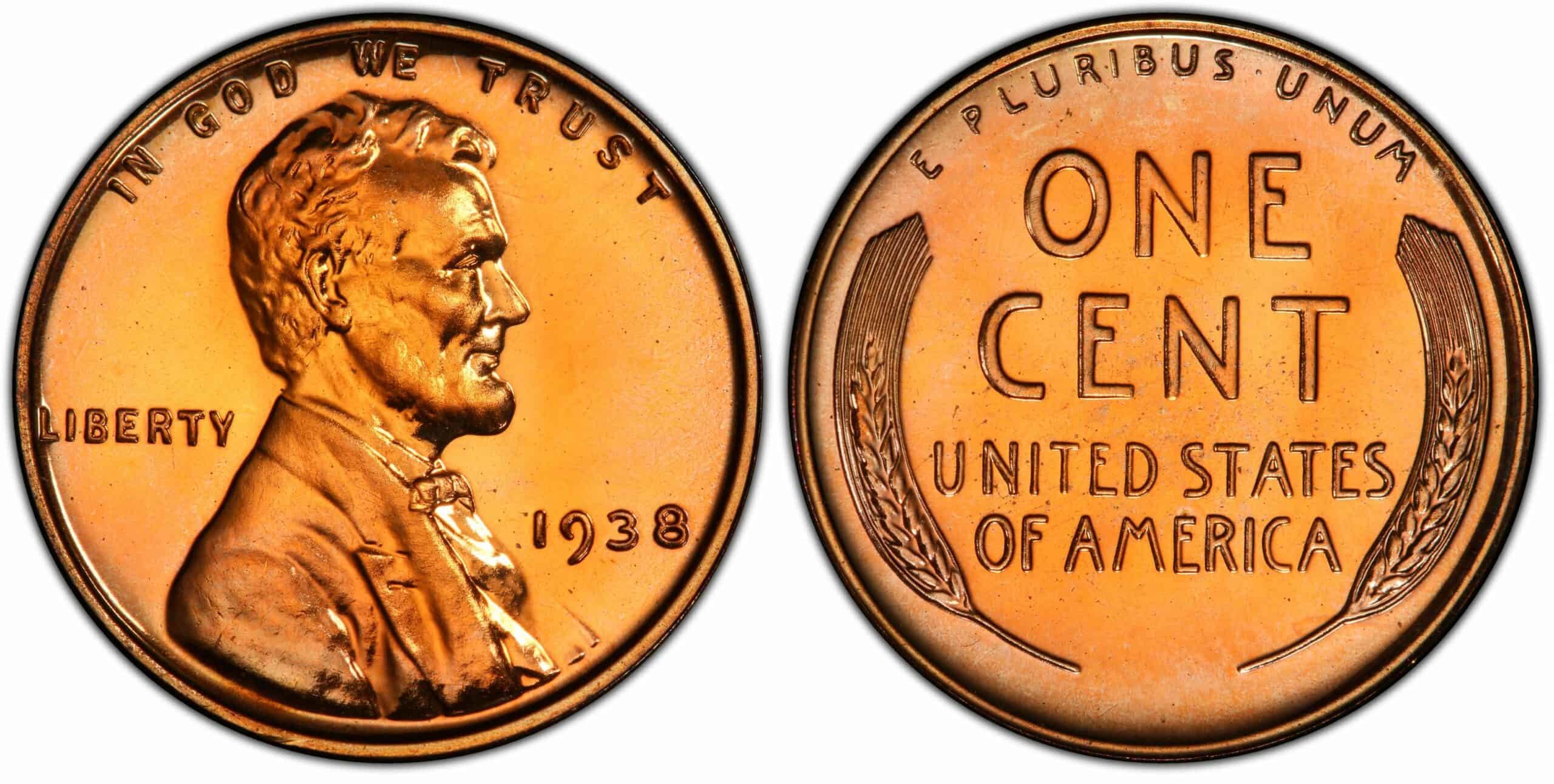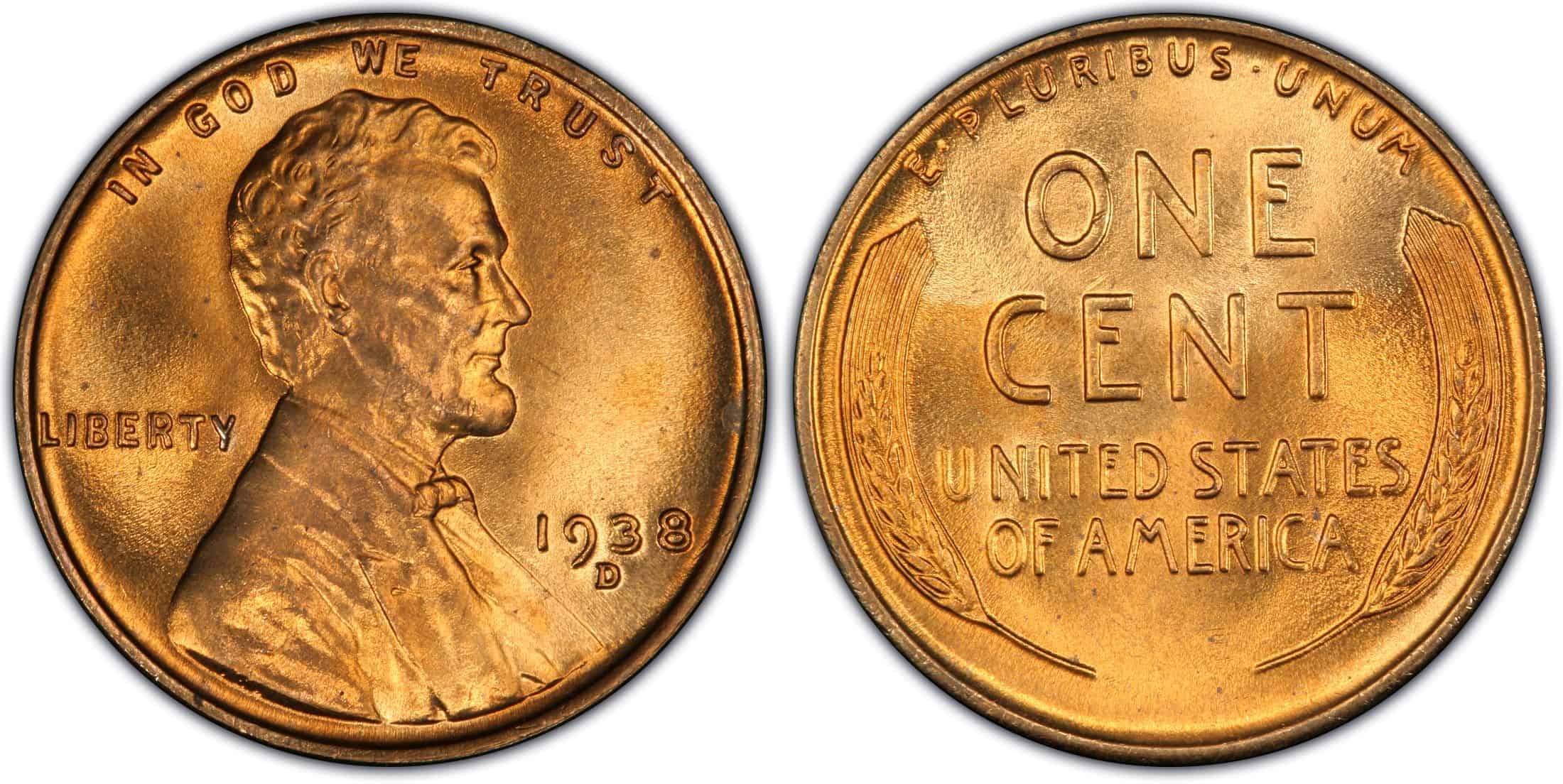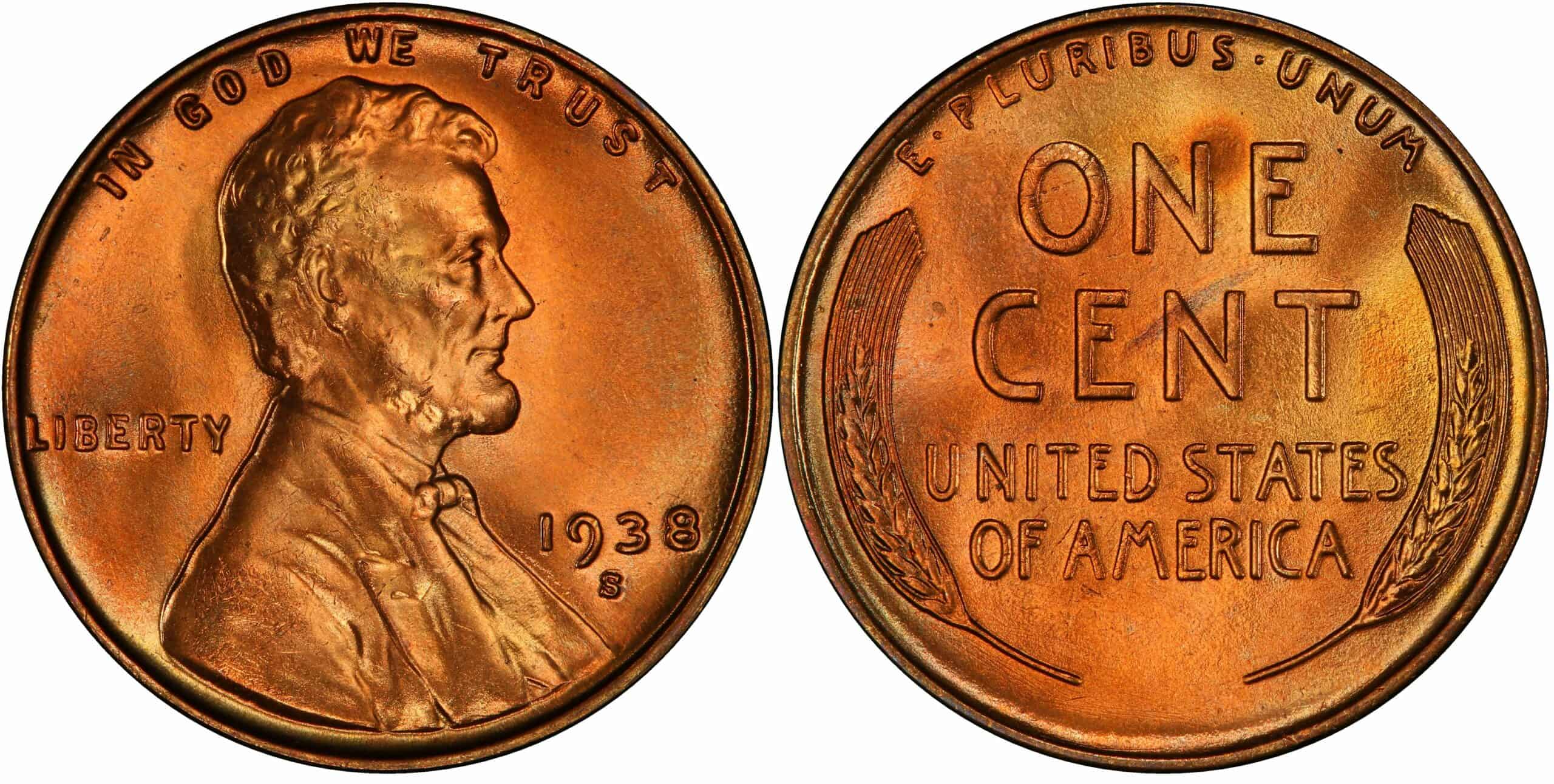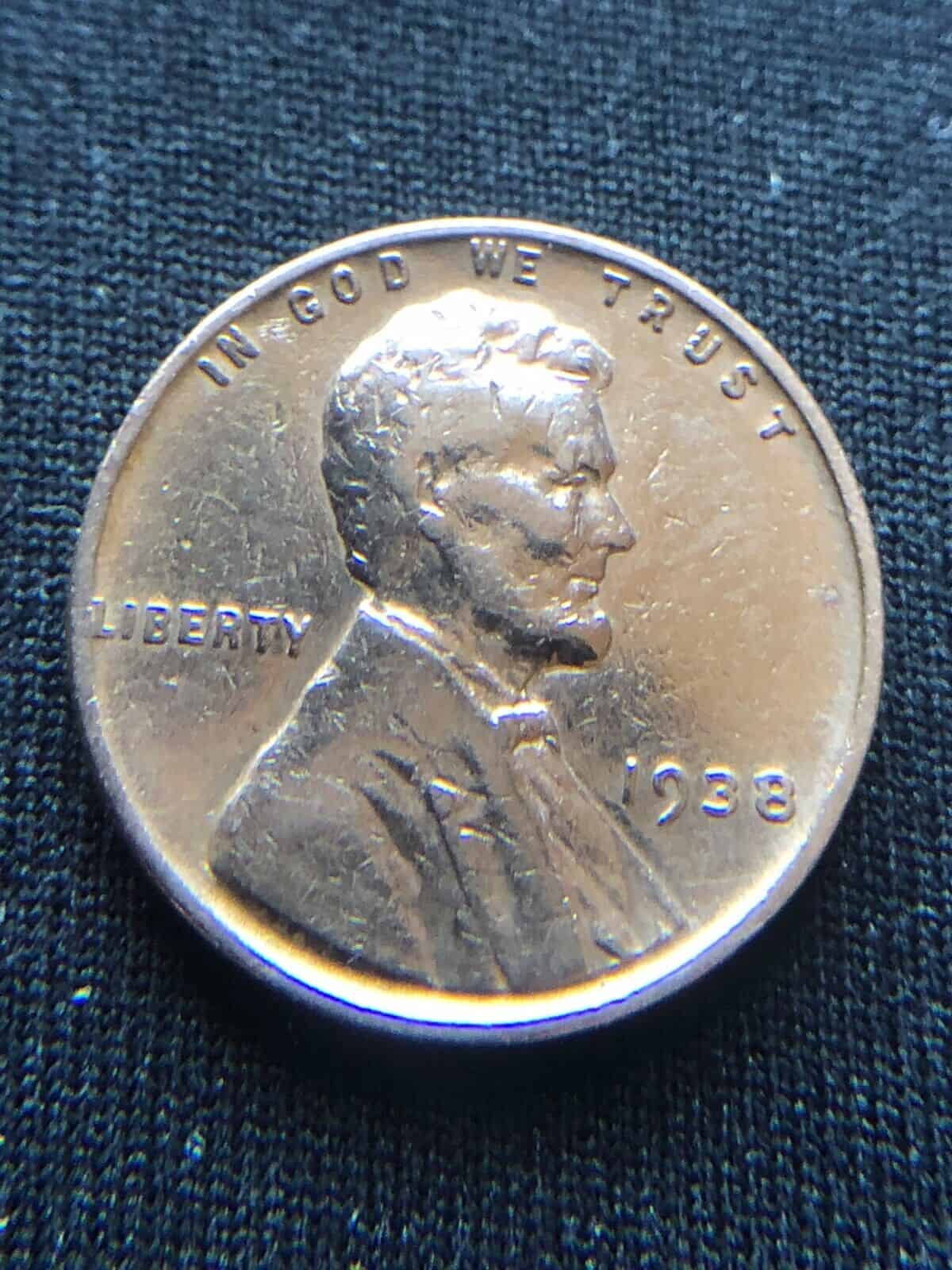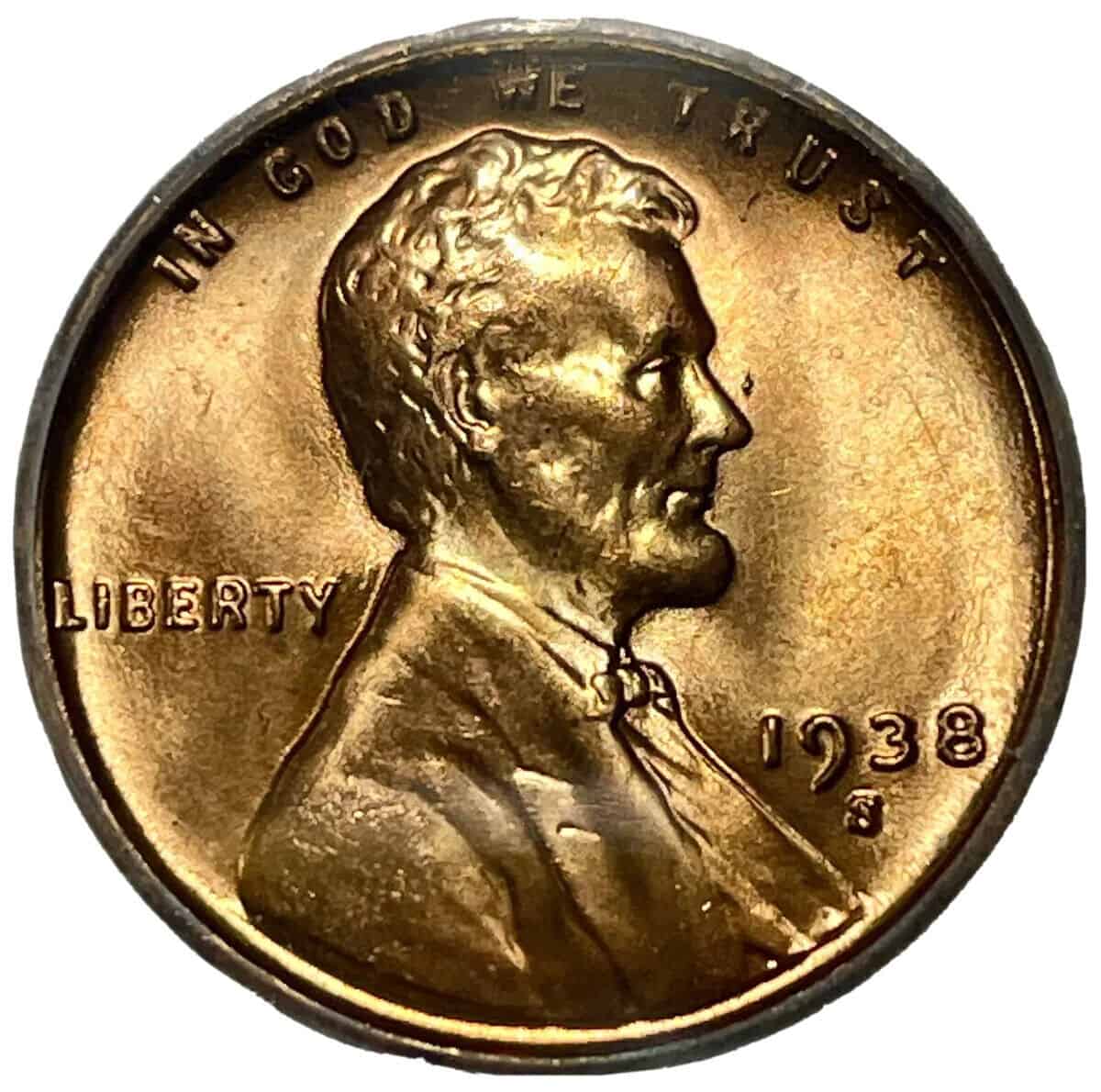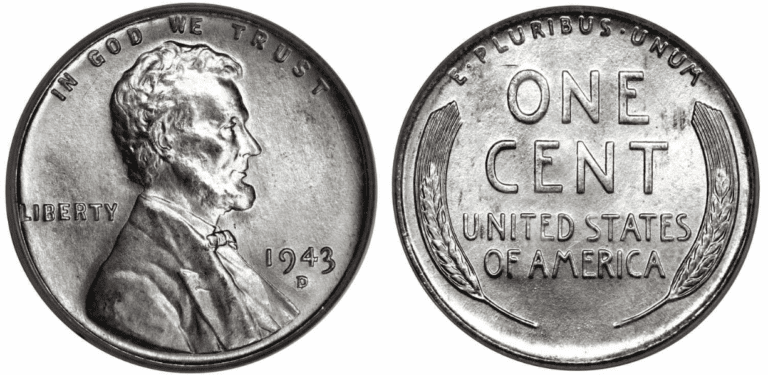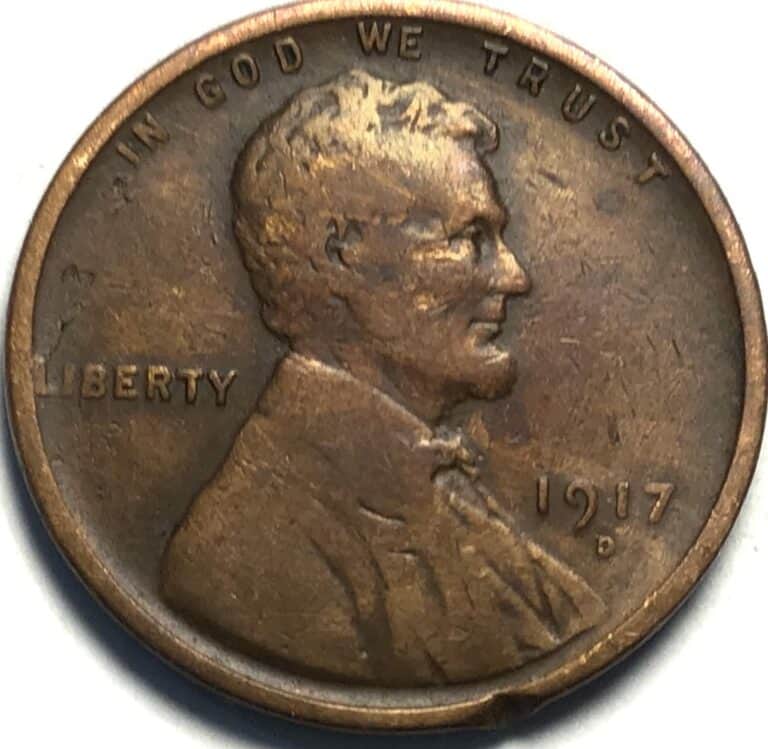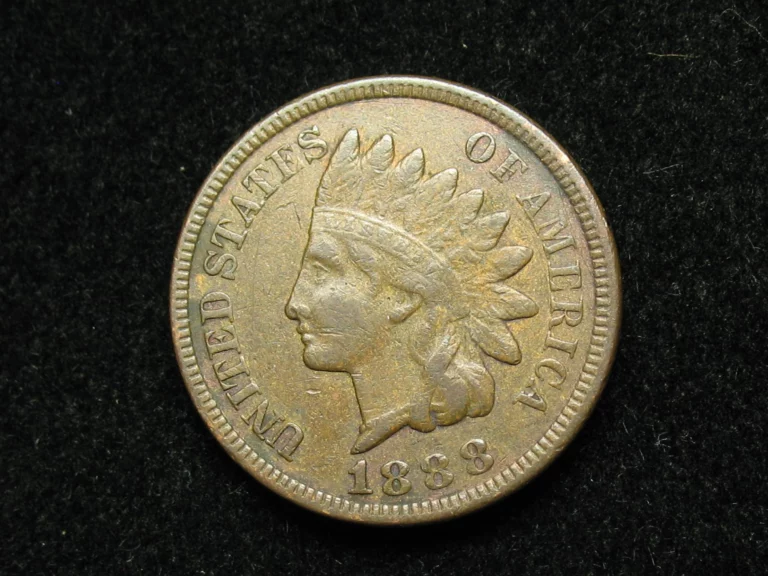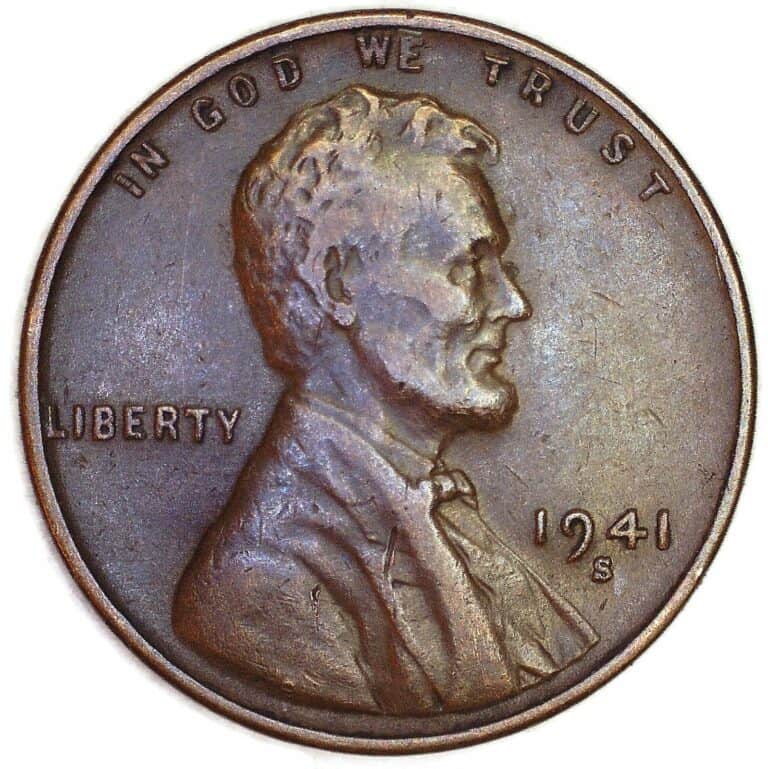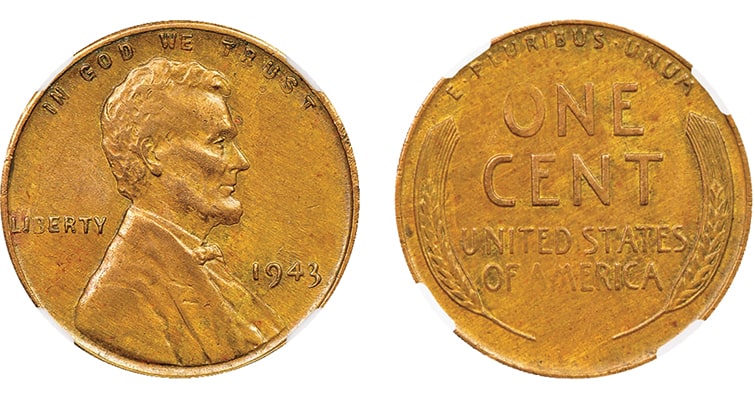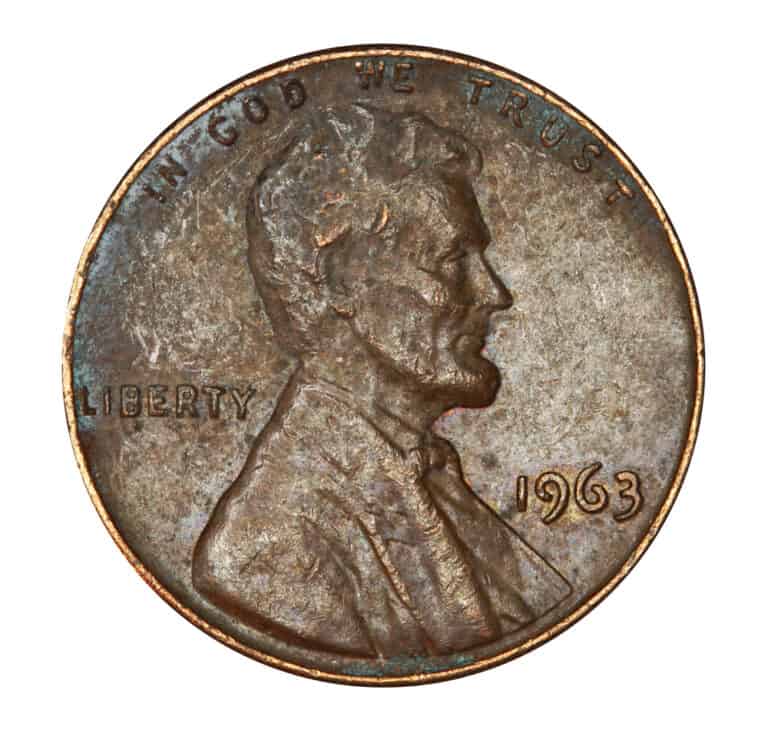1938 Penny Value: How Much Is It Worth Today?
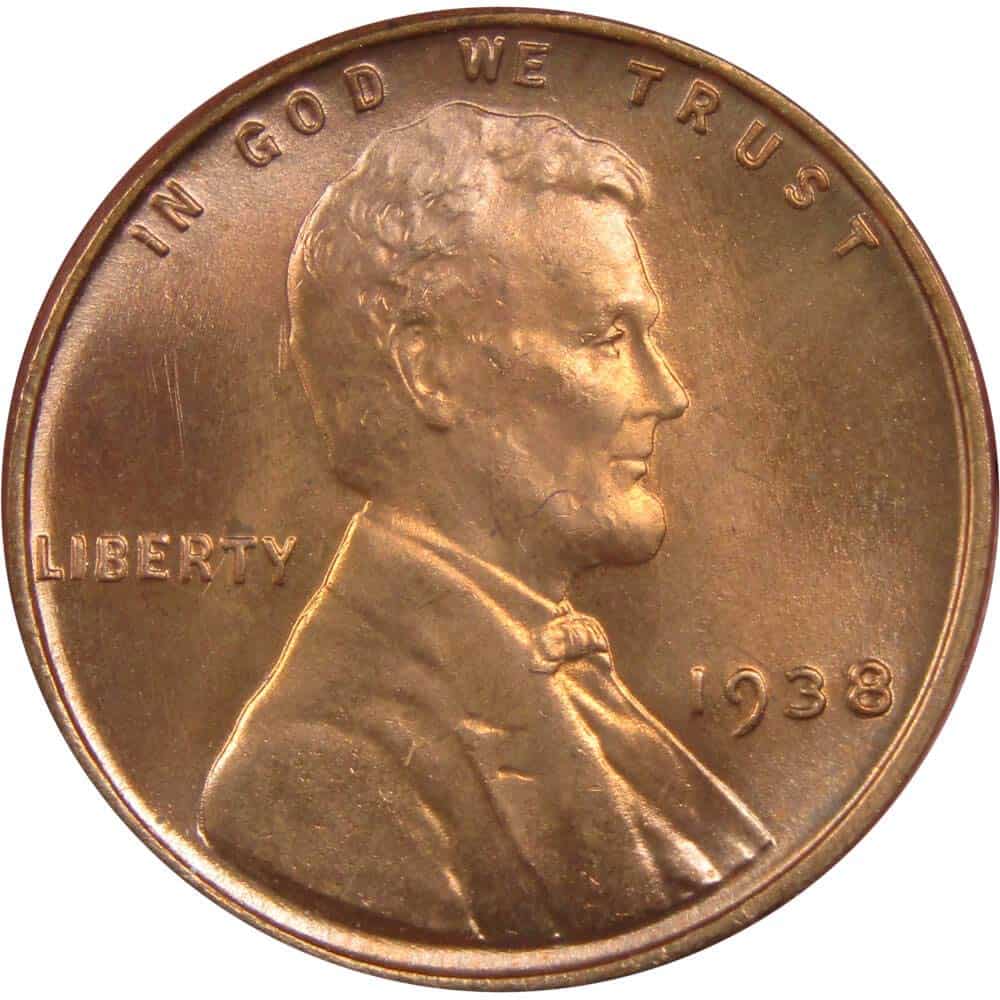
You may have heard of American pennies selling for large amounts of money. Perhaps you won some old pennies and would like to know what they are worth. Not all old pennies are equally valuable so how do you know what yours are worth?
In this article, we focus on exploring the 1938 penny value in all its varieties. You will also find information on how old coins are graded, what the auction records for 1938 pennies are, and a list of errors that can increase the coin’s value.
1938 Penny Value Chart |
|||||
| Mint Mark | Extremely Fine EF40 | Uncirculated MS60 | Uncirculated MS65 | Uncirculated MS67 | Proof PR67 |
| 1938 No Mint Mark Penny Value | $1.16 | $4.63 | $8.07 | $115 – $138 | $850 – $1,100 |
| 1938 D Penny Value | $1.46 | $4.63 | $8.07 | $130 – $160 | – |
| 1938 S Penny Value | $1.28 | $4.63 | $6.81 | $135 – $162 | – |
The pennies minted in 1938 are part of a series of American coins known as Lincoln pennies and they have an interesting history. The Lincoln pennies were the first ever American coin to feature a real person’s image on the obverse.
Before the US Mint started to produce the Lincoln pennies, which are also known as wheat pennies because of their reverse design, only symbolic figures were used on coins. It was only because the 100th anniversary of Lincoln’s birthday was approaching in 1909 that the policy of whose portrait could be used on coins was changed.
As the 100th birthday approached, the US Mint decided to release a commemorative coin bearing his likeness. The portrait was designed by Victor David Brenner, who designed both the obverse and reverse sides.
While the obverse of the coin has remained virtually unchanged over the years, the reverse has changed a few times. The first time the reverse was changed was in 1959 to commemorate 150 years since Lincoln’s birth.
The Trouble With Brenner’s Initials
When the coins were first issued, Brenner included his last name on the coin. However, the Mint Director objected to it so Brenner included his initials VDB on the design instead, and some 1909 coins were minted with his initials.
Because it was not common at the time to include the designer’s initials on a coin, this detail was not accepted by members of the public, the media, and some mint officials. As a result, the initials were removed until 1918 when they were included again but smaller at the base of Lincoln’s shoulder.
1938 No Mint Mark Penny Value
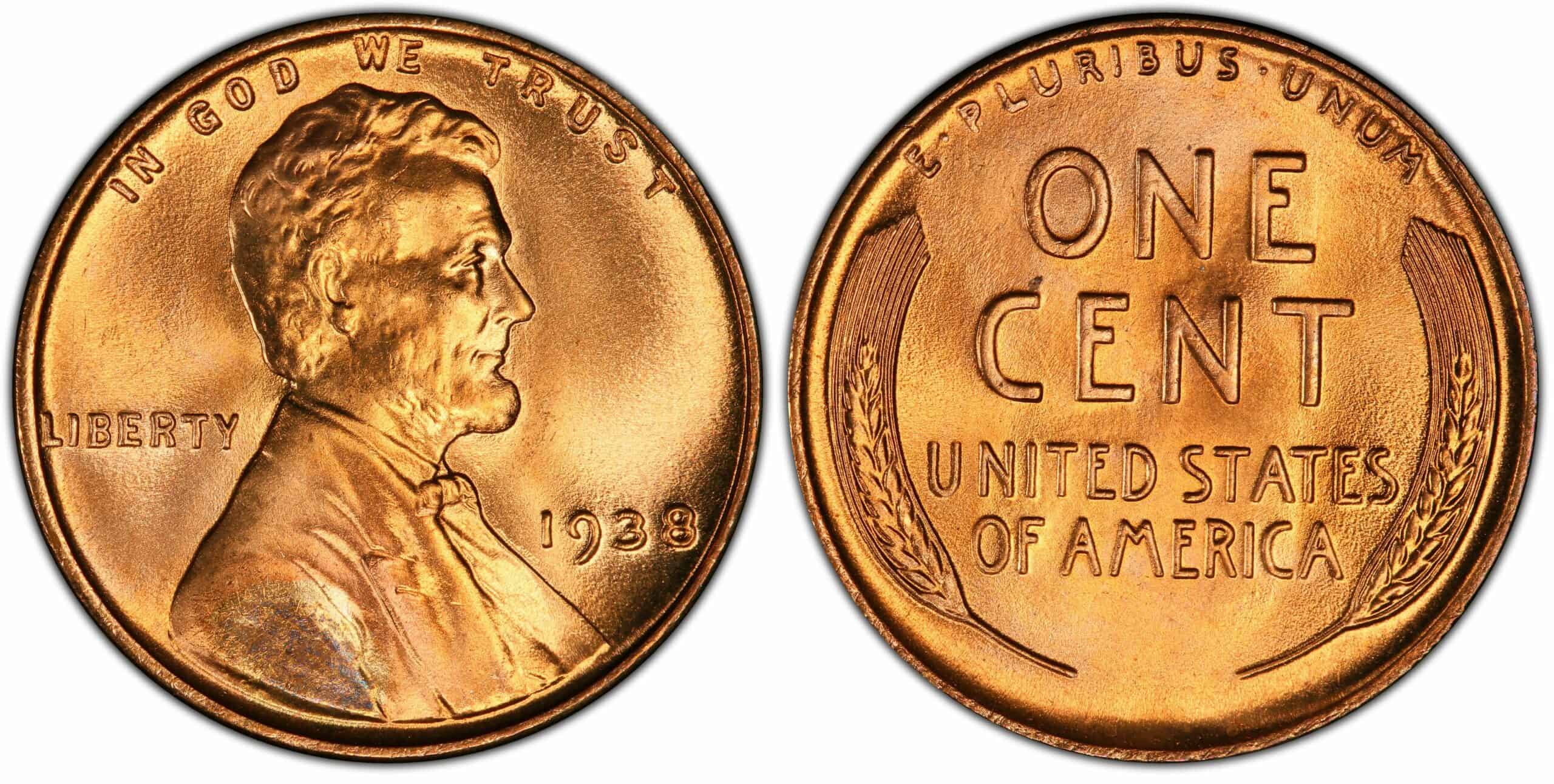
In 1938, 156,682,000 no mint mark pennies were minted for circulation. The no mint mark pennies are minted in Philadelphia, which was one of the three mint facilities producing pennies that year. It produced the largest amount of pennies out of the three and most 1938 no mint mark pennies are not considered rare.
The high number of circulated pennies available from 1938 is reflected in their price with extremely fine pennies available to purchase for $1.16. Even uncirculated pennies graded as MS60 are only valued at $4.63 and MS67 between $115 and $138.
However, there have been 1938 no mint mark pennies that have sold for a lot higher prices. In 2001, AU58 brown penny sold for $834 and a red-brown MS64 penny for $3,163 also in 2001. The auction record of $6,325 is from 2005 for an MS68 red penny.
The 1938 pennies were made with a composition containing 95% of copper and 5% of tin and zinc. The coin weighs 3.11 grams and has a diameter of 19.05 millimeters. It is 1 millimeter thick. The penny, which is a round coin, has a plain edge. In 1938, there were 191,886,734 pennies minted in total across the three mint facilities.
The Obverse
The head side, known as the obverse, depicts a portrait of former president Abraham Lincoln. His portrait is facing to the right with the minting date struck in front of it.
Behind the portrait is the word LIBERTY and IN GOD WE TRUST is inscribed above the portrait. The mint mark D or S is below the date. On Philadelphia-minted coins, the space below the date is blank.
The Reverse
The tail side of the coin, which is called the reverse, has the denomination ONE CENT struck in the center of the coin in large capitals. The country name UNITED STATES OF AMERICA is below the denomination and the phrase E PLURIBUS UNUM is at the top, curved along the top rim.
As well as the writing, the reverse features two durum wheat ears that curve along the right and left edges of the coin. This design was used on the Lincoln pennies until 1959 when it was changed to an image of the Lincoln Memorial in Washington DC.
1938 Proof Penny Value
The Philadelphia Mint not only produced the highest number of regular strike pennies in 1938 but it also minted 14,734 proof pennies. Proof pennies are coins meant for collectors and are minted with dies that are specially polished. They are struck more than once and hand-polished to produce high-quality collector coins.
Proof coins are valued separately from regular-strike coins and the value of a PR60 graded brown proof coin is $20 to $24. PR61 proof coins start from $25 and go up to $66 depending on their color.
The most valuable proof coins known from the 1938 mintage are graded as PR67 and they are available in red-brown and red variations. The red-brown proof coins are valued between $850 and $1,020 and the red coins from $950 to $1,100.
The auction record for a 1938 RD proof penny is $4,700 for an MS67+RD graded coin from 2016. However, the overall record belongs to a PR67CAM penny. It was sold for $14,400 in 2020.
Grading of Proof Pennies
Because proof pennies are only printed for collectors and are not meant for circulation, most of them are still in good condition. This is why they are valued slightly differently from regular strike coins.
Proof coins are still graded using a numbered scale but with the letters PR for proof coins. The grading of the coin will depend on its overall condition as well as its color and whether it is a cameo or deep cameo coin. Because proof coins have usually been carefully stored by collectors, it is rare to have them graded lower than PR60.
Color Grading
When the 1938 pennies, just like other copper pennies, were first minted, their color was red. As the coins age and are exposed to oxygen while in circulation, their color starts to change from red to red-brown, and finally brown. Because of the oxygenation process, the color is a good indication of the coin’s condition and is used in the valuation process.
When a coin’s surface is at least 95% red, it is given the designation RD. If the surface is 95% brown, the designation is BN. Anything between will be designated with RB. The most desirable 1938 pennies are those that still retain their red color.
Cameo and Deep Cameo
Cameo and deep cameo are terms used to describe the condition and appearance of a proof coin’s surface. Cameo refers to the contrast between the raised design elements of a proof coin and the surrounding mirrored fields. The contrast creates the cameo effect, where the raised design appears sharp against the smooth, mirrored background.
In deep cameo coins, the contrast between the raised design elements and the mirrored fields is stronger than in cameo coins. They have a highly reflective background that makes the design elements stand out in sharp relief. Coins with a strong cameo or deep cameo effect are generally considered to be more desirable and valuable than coins without this effect.
1938 D Penny Value
You can recognize 1938 pennies minted in Denver from the mint mark D on the obverse of the coin. In 1938, Denver produced 20,010,000 pennies for circulation. The D-minted 1938 pennies are very similarly priced to the no mint mark pennies from Philadelphia.
The auction record for a 1938 D penny graded as MS66+ with a brown surface is only $110 because they are still reasonably easy to find. The record for a red-brown with a grading of MS67+ is $495 and for an MS68RD, the best price for a D-minted 1938 penny is $4,313.
1938 S Penny Value
The third facility to produce pennies in 1938 was the San Francisco Mint and these pennies can be identified from the mint mark S. In 1938, the San Francisco Mint produced 15,180,000 pennies.
The prices of S-minted 1938 pennies do not vary significantly from the other two mint varieties. The auction record for the 1938 S penny is held by MS67+RD coin. It was sold in 2014 for $2,115.
Interestingly, the sales record for a brown MS63-graded 1938 S penny is higher than for a red-brown MS66-graded S penny. Both were sold in 2019 on eBay and the BN penny sold for $125 and RB for $75.
This demonstrates that sometimes with coins when several collectors bid for the same coin, prices can rise unexpectedly high. On the other hand, a lack of interested collectors competing for a coin can result in a lower-than-expected result.
1938 Penny Grading
When a 1938 penny, or any other coin, is sent to a professional coin grader, they will use an agreed scale to determine its value. This scale, which is known as the Sheldon scale, starts with 1 and ends with 70. Numbers up to 59 are used for circulated coins and 60-70 for uncirculated coins.
These numbers are used in combination with letters, such as VG for very good, AU for about uncirculated, and MS for mint state coins. The MS designation is used only for uncirculated coins.
This video from Coin Opp talks about the grading and value of Lincoln pennies in more detail.
Rare 1938 Penny Error Lists
1938 Penny Off-Center Error
These errors, where the image has been struck off-center, are reasonably common among Lincoln pennies. Often they are caused by the plank planchet not being in the correct position when it is struck with the coin die.
Off-center errors vary in severity, with some being unnoticeable at just 1% off-center and the most severe error coins having the image struck 99% off-center. While 20% errors are most common among the 1938 coins, the most desirable off-center coins still have the date fully visible, while the image is 50% off-center.
1938 Penny Doubled Die Error
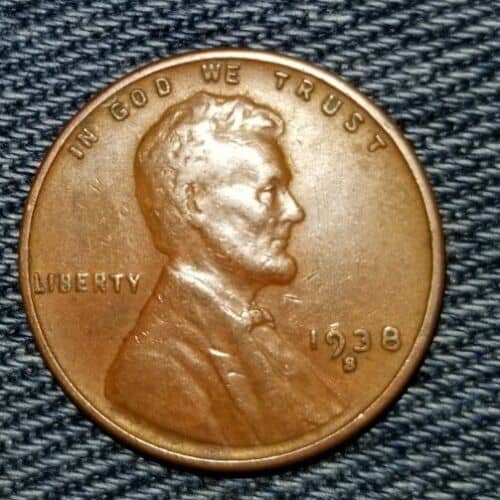
A doubled die error is created during the process of making the coin die. This results in the error, a doubled image, appearing on every coin struck with the doubled die. Among the 1938 pennies, look for doubling on the Latin phrase or the wheat ears.
1938 Penny Die Break Error
Die break errors can happen when the coin die ages and cracks appear on its surface. These imperfections are then transferred onto the coin. An example of a die break error on the 1938 penny is an extra line, looking like the letter I, between the letters B and E. This error is often referred to as a BIE error.
1938 Repunched Mint Mark Error
Mint marks used to be hand-punched, which means there was plenty of room for errors. Sometimes the first mint mark would be in the wrong position so the person doing the punching would do it again to correct the error. The best-known mint mark error among the 1938 pennies is on the S mint variety. On these coins, you can spot a larger S punched over a smaller S.
The value of 1938 pennies with errors, depends on the type and severity of the error as well as the overall condition of the coin.
1938 Penny Frequently Asked Questions
How much is a 1938 penny worth today?
Values of 1938 pennies start from just over a dollar for a coin in good condition to a few hundred. 1938 pennies in good uncirculated condition can sell for hundreds and coins with high MS grades can fetch from a few to several thousand in auctions.
Are 1938 pennies rare?
Regular struck 1938 pennies in circulated condition are not rare. However, pennies that are still in uncirculated condition are not as easy to find and while not extremely rare, are considered less common.
